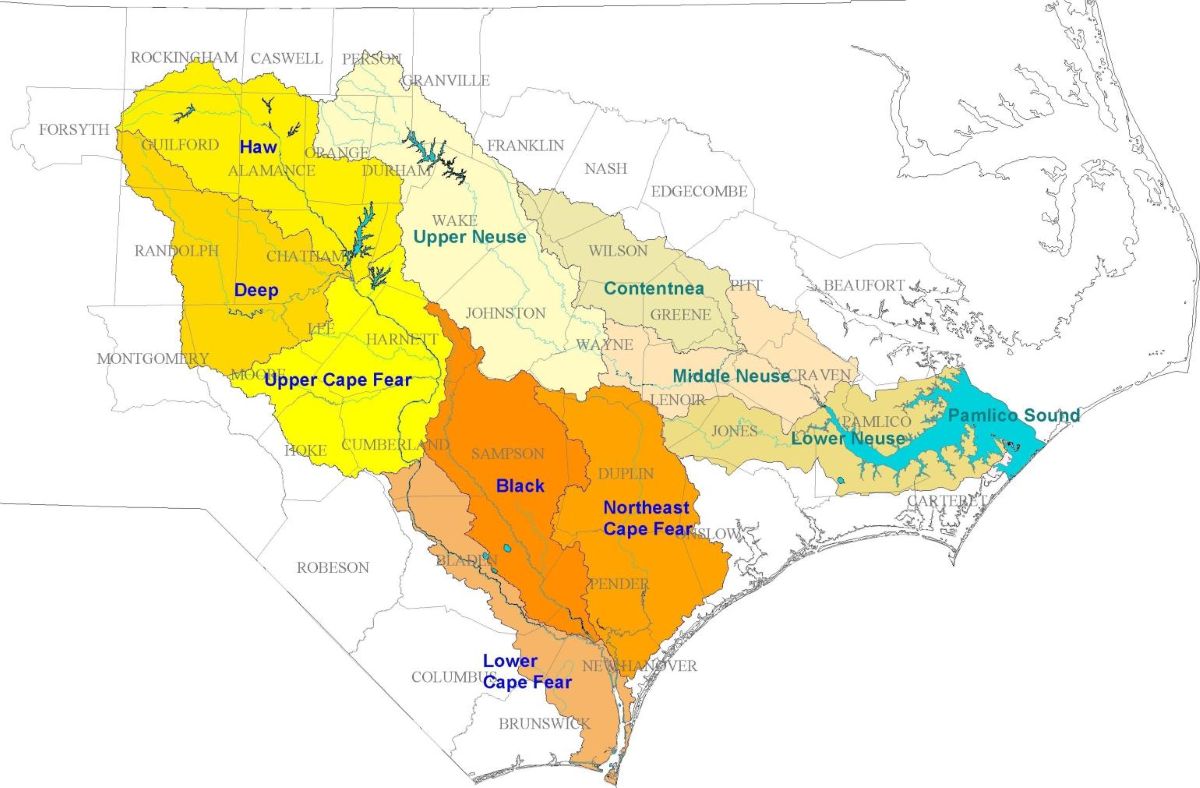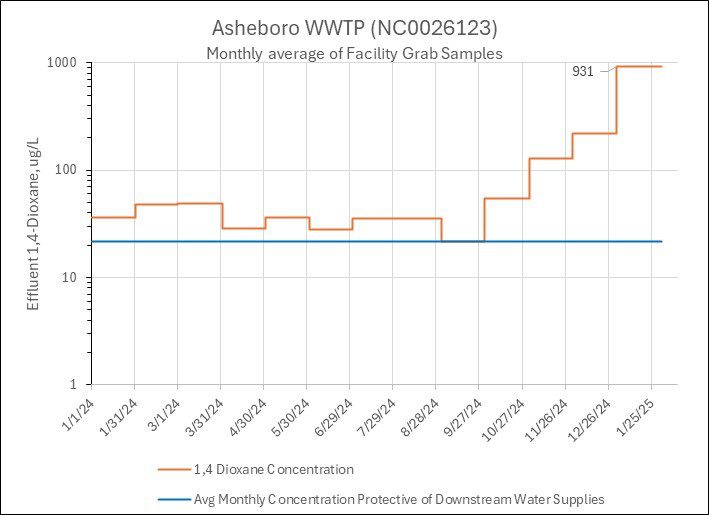
A city-operated wastewater treatment plant in Randolph County discharged substantially high levels of 1,4-dioxane last month into a tributary of the Cape Fear River, the drinking water supply for about 1 million North Carolinians.
Several downstream businesses and water utilities, including Cape Fear Public Utility Authority in Wilmington and Pender County Utilities, were recently notified that the state “grab samples” collected Jan. 24 at Asheboro’s wastewater treatment plant returned a final concentration of 2,200 parts per billion, or ppb.
Supporter Spotlight
The plants own grab sample, which was collected the same day, detected a concentration of 3,520 ppb, according to North Carolina Department of Environmental Quality’s Division of Water Resources, or DWR. Grab samples are taken at a single point in time.
The federal drinking water health advisory level is 0.35 ppb for 1,4-dioxane, which the Environmental Protection Agency categorizes as a likely human carcinogen.
“After the initial analysis of the samples, DWR completed quality assurance and control measures to validate the results,” a DEQ release states. “DEQ, using EPA toxicity calculations for lifetime exposure, has determined that the average monthly 1,4-dioxane concentration protective of downstream water supplies is about 22 ppb for the Asheboro discharge.”
The chemical compound is used primarily as a solvent in chemical manufacturing.
DWR’s Jan. 28 notice to downstream drinking water utilities and businesses comes just months after a state chief administrative law judge last September revoked 1,4-dixoane limits included in Asheboro’s discharge permit.
Supporter Spotlight
DEQ appealed Judge and Office of Administrative Hearings Director Donald van der Vaart’s decision in Wake County Superior Court. The court has not yet ruled on the appeal.
As it awaits a ruling, DEQ is on a timetable set by the EPA to reissue Asheboro’s National Pollutant Discharge Elimination System, or NPDES, permit and restrict how much 1,4-dioxane it’s wastewater treatment plant may discharge into surface waters.
The federal agency gave the department a 90-day window to submit a proposed revised permit.

DEQ or “any interested person” may request a public hearing on the EPA’s objection to the permit within those 90 days.
If that request is not made and DEQ does not meet the deadline, “exclusive authority to issue the permit passes to the EPA” in accordance with the code of federal regulations, according to the letter.
It is unclear whether the EPA under President Donald Trump will move forward with that mandate.
Trump’s executive order that freezes new regulations prompted the Office of Management and Budget to withdraw a federal rule that would require per- and polyfluoroalkyl substances, or PFAS, manufacturers to monitor and reduce discharges into surface waters under the Clean Water Act.
The elevated levels of 1,4-dioxane recorded last month were found in discharge from the treatment plant to Hasketts Creek, which empties into the Deep River within the Cape Fear River Basin.
“DEQ continues to sample at municipal wastewater treatment plants and in surface waters across the Cape Fear River Basin to identify 1,4-dioxane sources,” Laura Oleniacz, DWR public information officer, said in an email. “In addition, DEQ continues to assist municipalities to minimize or reduce 1,4-dioxane coming from industrial wastewater. DEQ is also exploring other avenues for protecting drinking water.”
The agency “agrees with EPA that limits are necessary to protect North Carolinians,” she said.
There have been “significant reductions” at some wastewater treatment plants in what DEQ says has been a collaborative effort between the agency, Environmental Management Commission and municipal operators.
Residents, local governments and water utilities in the Cape Fear Region have been pushing for tighter limits of 1,4-dixoane and PFAS releases from upstream dischargers.
Proponents for such limits argue that the dischargers should bear the brunt of responsibility in keeping these synthetic compounds out of drinking water sources.
“The primary means to achieve health-based levels is to reduce and minimize the release of the contaminant at the sources,” DEQ stated in a Feb. 7 release. “Industrial best management practices and treatment technologies exist to achieve these outcomes that protect North Carolinians’ drinking water sources.”
Last November, the Cape Fear utility’s executive director petitioned DWR Director Richard Rogers and Environmental Management Commission Chair J.D. Solomon to begin emergency rulemaking to limit 1,4-dioxane discharges upstream.
The petition was returned to the utility later that same month with Rogers stating it lacked appropriate text for a proposed emergency rule.
The utility has not taken further action on the matter.
In an email responding to questions Wednesday, Cape Fear Public Utility Authority Director of Communications Vaughn Hagerty said utility staff had “been monitoring the situation since we received notification” from DEQ regarding the elevated 1,4-dioxane discharge levels from the Asheboro plant.
The utility’s Sweeney Water Treatment Plant treats raw water from the Cape Fear River.
“Treatment technologies at Sweeney, specifically ozonation and biological filtration, are very effective at removing 1,4-dixoane,” Hagerty said.
Additional information about Sweeney’s treatment of 1,4-dioxane and other compounds is available online.
DWR’s Cape Fear River Basin 1,4-dioxance wastewater discharge data is available online.







